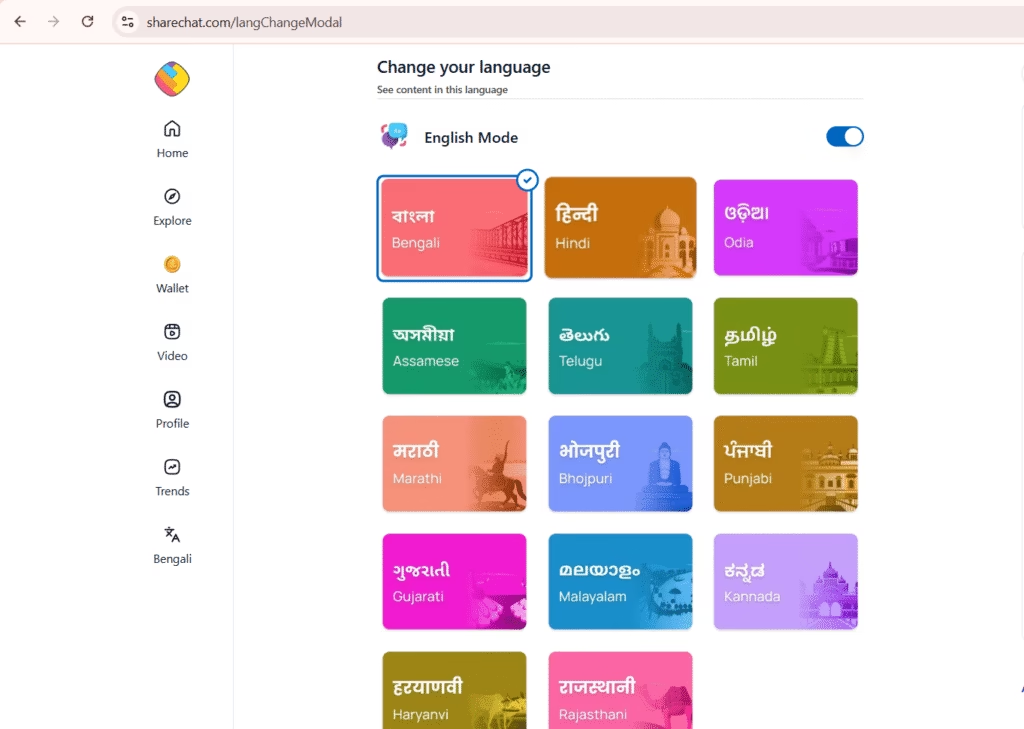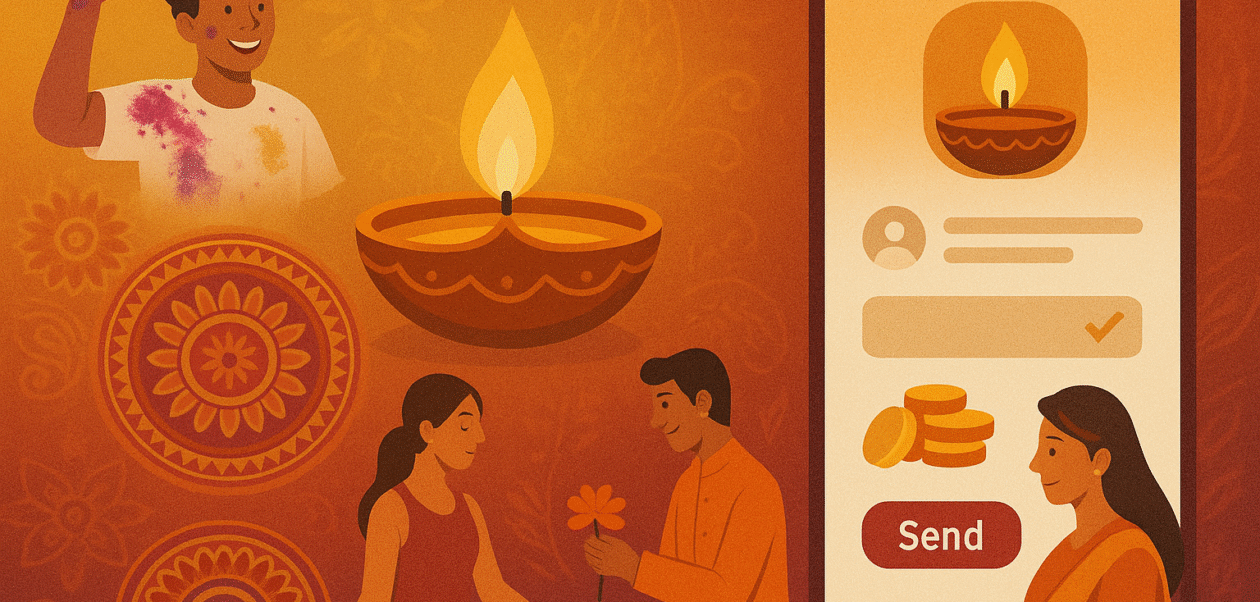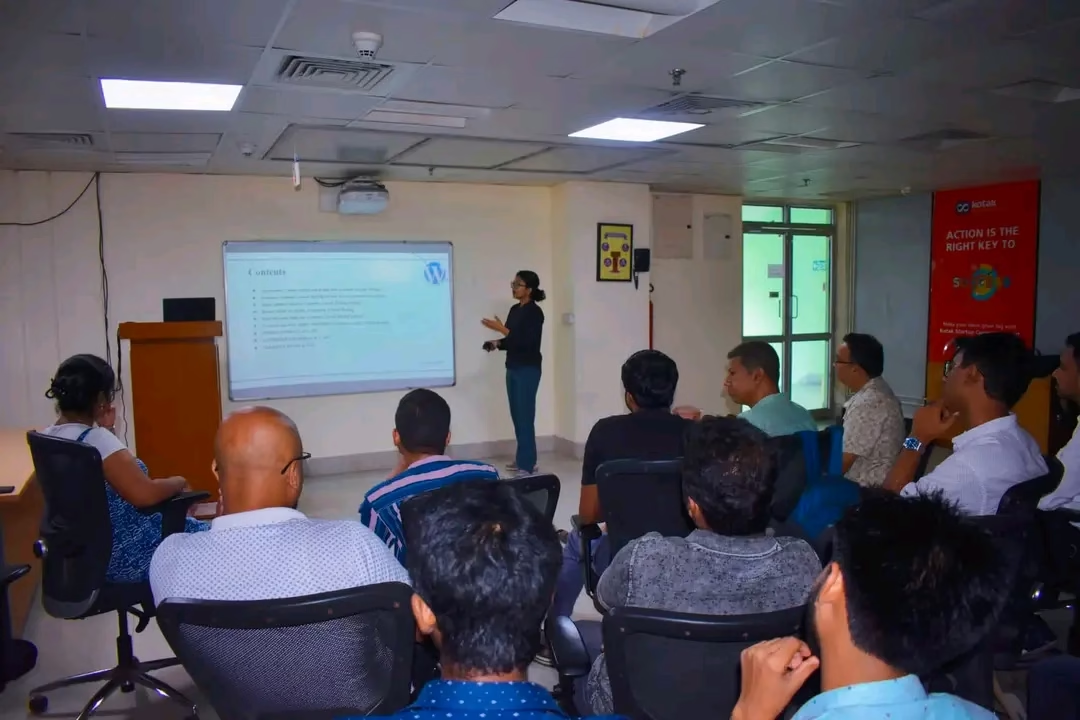Indian culture in UX design is more than a visual theme — it’s a deep well of empathy, storytelling, and emotional resonance that can transform how users connect with digital experiences.
While global UX design has long followed principles of clarity, speed, and minimalism — often shaped by Western sensibilities — today’s designers are creating for a far more culturally diverse world. That means the way we think about design must evolve too.
India, with its 5,000+ years of rituals, symbolism, languages, and everyday traditions, offers unique lessons for human-centered design. From vibrant color associations to intuitive gestures and familial trust cues, Indian cultural patterns can inspire more inclusive, intuitive, and soulful UX.
In this blog, we explore how Indian culture can enrich UX design — not by replacing global best practices, but by enhancing them with context, emotion, and cultural relevance. Through real-world examples and design insights, we’ll uncover why designing with cultural awareness isn’t optional — it’s essential.
India: A Billion Users, a Billion Contexts
India isn’t just a market. It’s the world’s largest open internet user base, shaped by diversity in languages, devices, and digital behaviors.
According to Statista and IAMAI:
• 970+ million internet users by 2025
• 80% mobile-first access, often in low-bandwidth areas
• Tier 2 and Tier 3 cities drive growth
• A high percentage of first-time internet users
UX Insight
Designing for India requires empathy, clarity, and cultural awareness. Features should adapt to varied tech familiarity, linguistic backgrounds, and device constraints—not just scale.
Design for inclusion, not assumption.
Symbols That Speak: The Power of Visual Language
Indian culture is deeply symbolic. Everyday life is filled with icons and rituals that communicate meaning instantly:
• A coconut at the door? New beginnings.
• A diya at dusk? Light and protection.
• Haldi on the skin? Purification.
• Red bangles? Married.
These are contextual cues, not just decorations. Even those who can’t read often navigate life visually, using these signs.
UX Insight
Use iconography, color, and cultural metaphor to guide users naturally—without overloading them with text.
Example: A “Submit” button during Diwali shaped like a glowing diya adds both delight and context—it’s more than decoration; it feels like home.
Simplicity Is Survival
India is complex—but Indians are masters of jugaad: finding smart, simple solutions to navigate daily chaos. Whether it’s train stations, payments, or weddings, systems emerge that work, even with little instruction.
UX Insight
Simple flows, minimal taps, and clear feedback loops win. Especially on mobile, where screen space is limited and literacy varies.
Example: Google Pay India uses vibrant icons, minimal text, and festive animations—like coins falling after a successful transaction during Holi. It’s simple and joyful.
Rituals, Not Just Habits
Western UX often focuses on habit loops—efficiency, streaks, checklists. Indian rituals, however, are rooted in meaning and mindfulness:
• Morning chai
• Evening puja (prayer)
• Weekly bazaar visits
These are not just routines—they’re emotionally and spiritually grounding.
UX Insight
Can your product create ritual-like experiences that feel personal, intentional, and meaningful?
Example: The Sattva meditation app combines Vedic chants, daily reflections, and ritual-based reminders, making meditation feel like a spiritual practice, not a chore.
Designing Without Words: The Multilingual Reality

India has over 1,600 languages and dialects. Even among fluent users, preferences for language, script, and tone vary widely. Translation alone doesn’t solve this—it requires reimagining the interface.
UX Insight
Design for language inclusivity with:
• Instant language selection
• Regional fonts and iconography
• Audio-first and visual-first interfaces
• Local idioms in microcopy
Example: Apps like ShareChat let users select a language upfront, then show regionally tuned content, UI, and UX patterns.
Don’t just localize—culturally customize.
Atithi Devo Bhava: Hospitality in UX
“The guest is god” is not just Indian hospitality—it’s a mindset that translates beautifully into user experience. A welcoming interface makes users feel valued, safe, and respected, especially if they’re new to technology.
UX Insight
Use empathetic onboarding, friendly microcopy, and contextual help to create comfort.

Example: Swiggy’s empty cart message says, “Good Food is Always Cooking.” It’s simple, human, and makes the user smile.
This is UX with a personal touch—not just UI with a task in mind.
From Chai to Calm: India’s Cultural Exports in Global UX
Indian traditions—yoga, Ayurveda, chai, mindfulness, spirituality—have shaped global wellness and design trends. These aren’t just buzzwords—they represent balance, reflection, community, and celebration.
UX Insight
Modern digital products can weave in Indian-inspired principles:
• Mindfulness and slowness (as seen in Calm, Headspace)
• Celebratory UI (festive animations, festival themes)
• Community-first experiences (like in WhatsApp groups or local forums)
These aren’t features—they’re ways to connect with emotion.
Final Thoughts: Design That Feels
Great UX isn’t just about speed or function. It’s about feeling—creating experiences that resonate, comfort, and inspire. Indian culture offers a palette of symbols, rituals, values, and warmth that can elevate digital products beyond utility.
What Indian culture teaches us about UX:
• Storytelling over sterile flow
• Simplicity born from chaos
• Meaningful repetition, not mindless streaks
• Design that includes, not excludes
• Warmth, not just efficiency
Don’t replace one design system with another—enrich it.
n a world designing for billions, culture isn’t an edge case—it’s the starting point. And India, with all its layered humanity, offers a rich guide for UX with soul.
Your Turn
Have you seen culture—Indian or otherwise—shape digital design in meaningful ways?
Do you use cultural insights in your product work?
Share your thoughts in the comments or tag this conversation with #DesignWithCulture.
Read more about Indian Culture:- https://nomadjourney.in/indian-culture-inspires-2025/




